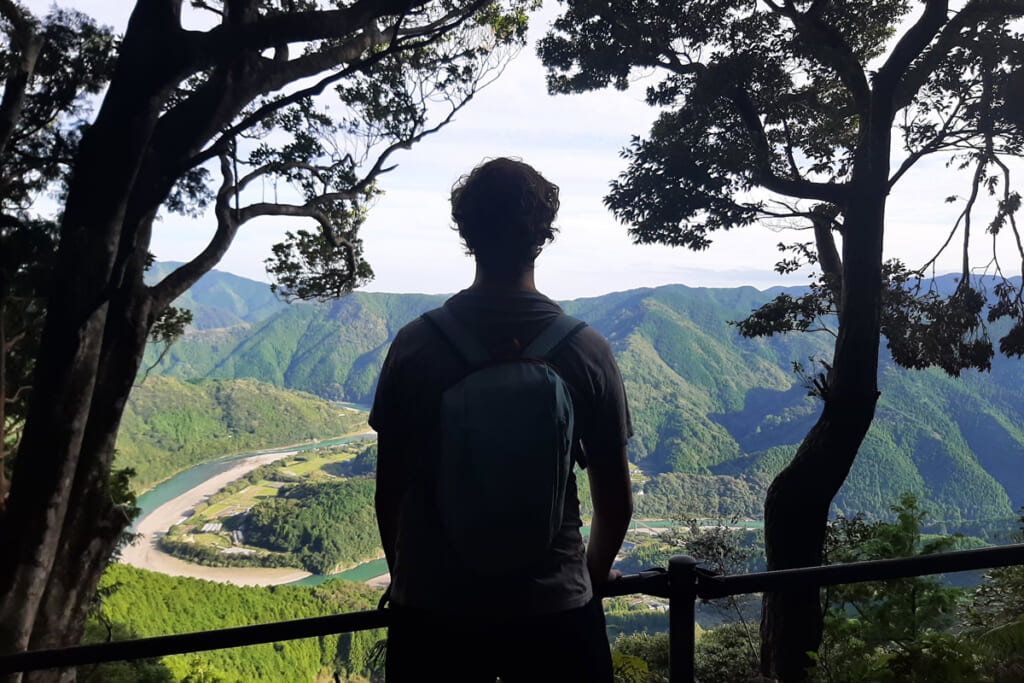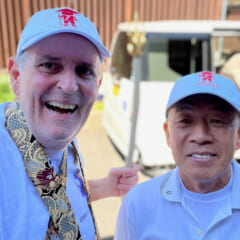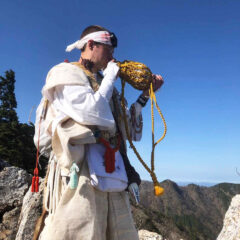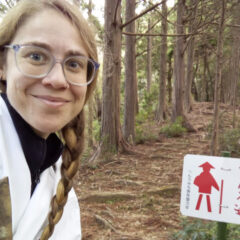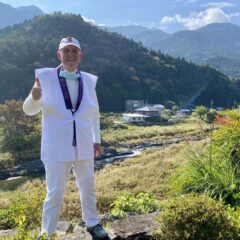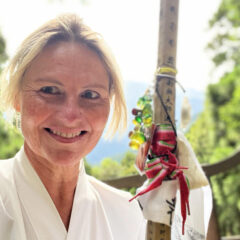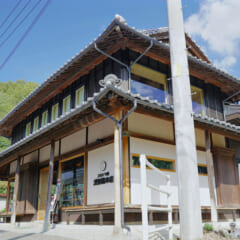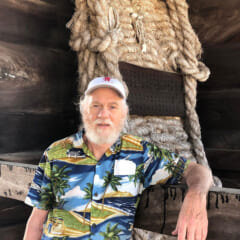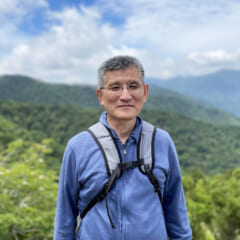わたしの四国旅 (7) 旅した人:アレックスさん
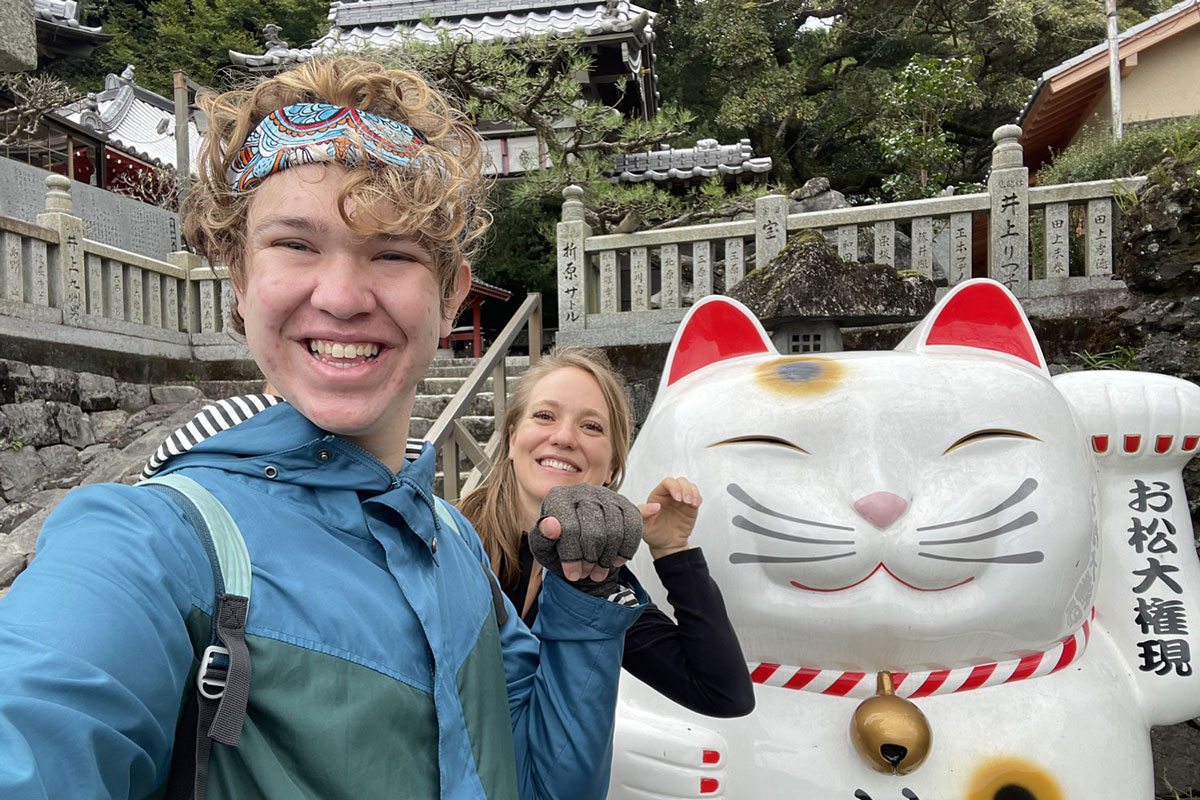
![]() Alexander Litz, USA
Alexander Litz, USA ![]() Course.3. Kakurinji and Tairyuji Mountain Temple and Coastal View Walking Course
Course.3. Kakurinji and Tairyuji Mountain Temple and Coastal View Walking Course
Why do we walk the Shikoku Henro?
Why do we walk the Shikoku Henro? Sloping mountains, crossing rivers, and trekking narrow paths, walking even just one section of the Henro isn’t easy. In fact, it’s like that by design, meant to test your physical, mental, and spiritual will to the limit. But yet, even after Kukai established this route some 1,200 years ago, in this day of cars, trains, and planes, we still insist on walking this route by foot as a testament to the human spirit.
Day 1
My Henro journey started with an early train ride through the Tokushima countryside on a cloudless day. Upon disembarking, temple number 19, Tatsue-ji, greeted me with a jumble of elegant architecture all compacted into the temple grounds and a proud statue of the monk Kukai. Here, it is said that crossing the White Herron Bridge is an indicator if one’s soul is pure or not. Legend has it that if one with a wicked heart tries to cross the bridge, a white heron will dive down, attacking the person and rendering them unable to move.
The next leg of the journey consisted of a four-hour walk along a simple paved path. On my right was a modern road, with only light traffic. And on my left was the simple splendor of well-tended farmland. Walking uninterrupted for this time focused my attention on the polar duality of tradition and modernization that are thematic in Japan in this day and age.
From the foot of the mountain, I quickly delved into the side of Japan that errs more on the side of tradition as I winded my through a forested mountain path to the next temple, Kakurin-ji. Being notoriously difficult to visit in a historical sense, the “crane grove temple” received its name from Kukai, who is rumored to have seen a pair of cranes dive down to protect a golden Jizo statue.

Towering above the temple complex is the only three-story pagoda in Tokushima Prefecture, a protrusion that elegantly contrasts with the sharp blue skyline and synthesizes with the gentle wooded air of the cedars. Reaching my accommodation just before sundown, my eyes closed almost instantly as I held my excitement for the next day.
Day 2
In the morning, Omatsu Daigongen Shrine was not the stop I expected, but the stop that left perhaps one of the strongest impressions on me during my travels. Dedicated to justice for a ghostly feline, this quirky yet charming shrine is home to over 10,000 Maneki Neko waving cats, along with some real ones.
Diving into the bamboo forests yet again, I traversed a steep forest path to reach my goal of the great dragon temple of Tairyu-ji. Capping the southeastern tip of the Shikoku Mountains, it is said that Kukai trained here for 100 days in his youth by sitting on a towering cliff outfacing the vast wilderness of Shikoku.
For lunch, the ropeway down the mountain made for a pleasant descent from the summit and offered brilliant views of the dense cedar forests that shroud the temple in mystery and wonder. After a refreshing bite of Tokushima’s famous sudachi ramen, the ropeway took me back up, and I continued my descent, this time by foot.
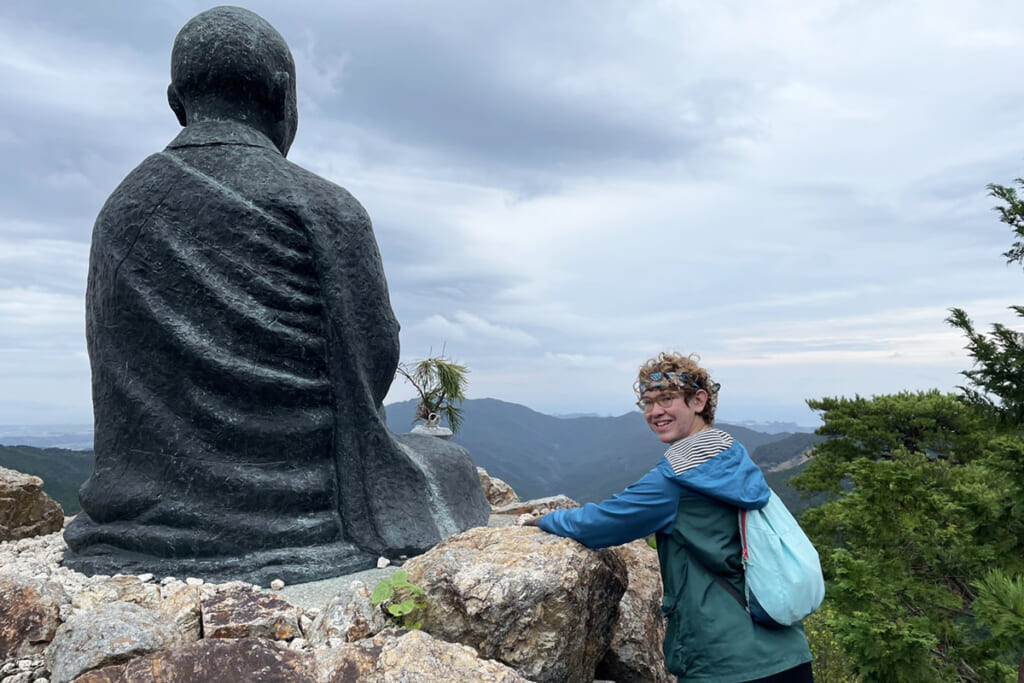
Day 3
Day three started with a visit to Byodo-ji, the temple to “heal people’s mental and physical illnesses equally.” After two full days of nonstop walking, my mind, body, and especially my feet were ready for some healing as the journey so far had been just as spectacular as it had been grueling.
“Vally of the Crabs” stood out as quite the unusual name for a path that led from the mountains to the sea. That was until, of course, I had to start minding my step so as not to crush any of the hundreds of tiny scuttling crabs that call the trickling steam that flows down the center of the Kaitani Pass home.
Reaching the coast was a reward in itself, as the azure seas of Tainohama Beach were a sight for sore eyes. Passing through a pleasant fishing village, I stopped at a mom-and-pop convenience store to grab some onigiri for lunch and sat along the pier with my legs hanging over the edge, occasionally getting a splash of mist from the feisty waves. As I ate, a curious weasel scurried past, stopping only for a second to see who this stranger was before carrying on his way.
Eroded by centuries upon centuries of the wind and the wake, light shines through the craggy ridge of Ebisudo Cave in a burst of serendipity. As I walked along the coastline towards the town of Hiwasa, turtle motifs frequent my gaze as, during the summer season, this atmospheric seaside town is the spot of choice for many sea turtles to lay their eggs.
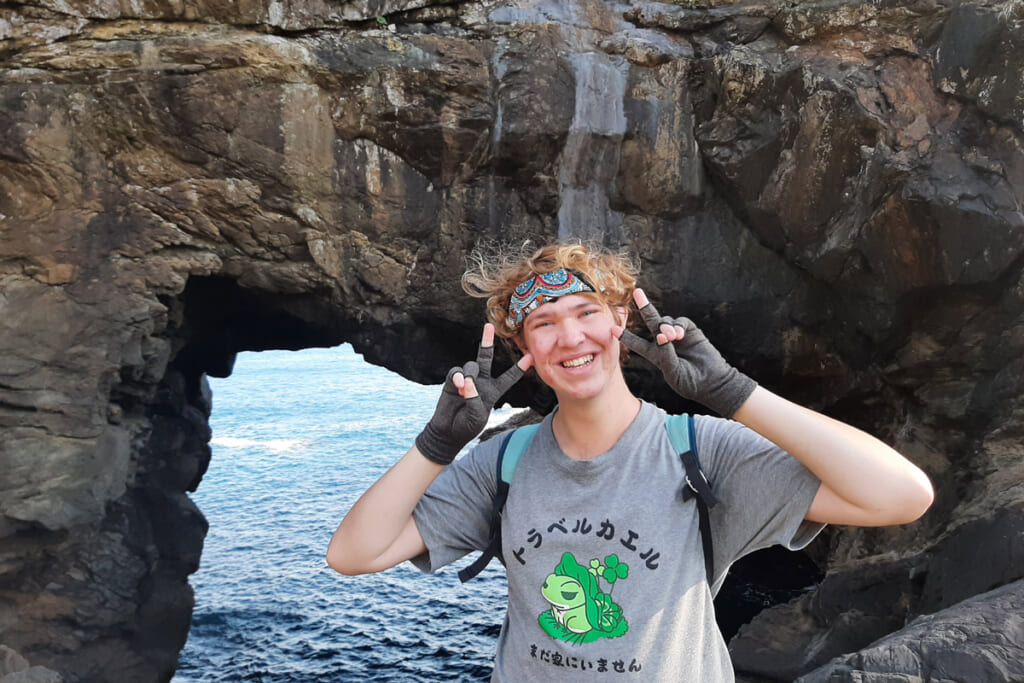
Day 4
Finally reaching my last destination, the fiery red tower of Yakuo-ji peers down on me from atop its mountain perch. Having walked almost 73 kilometers over the last three days, the final climb to the top of the temple brings about both a burning sensation of pain and pride as victory is within my grasp. As I gaze out across the town and into the night, a wave of accomplishment ripples within me as while the journey ends here, these memories will last me a lifetime.
So why do we walk the Shikoku Henro?
So why do we walk the Shikoku Henro? For me, the Henro was three days of enervating walking, and by the end, I was putting everything into taking just one step. Despite this exhaustion, however, I gained a clairvoyant state of mind that pushed me to look past the state of my physical body and really appreciate the natural elements and the incredible world around me. This journey was no longer about me but about my place in the world. And while the experience in itself was incredible, the lessons I learned now exist as a permanent part of my everyday life.
